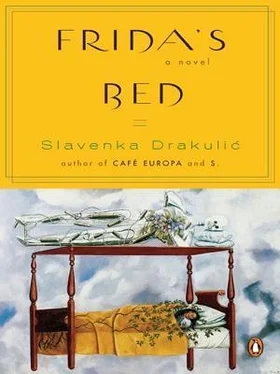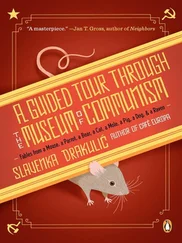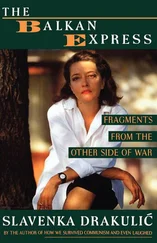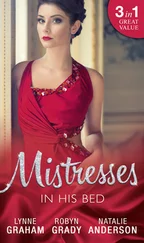She needed to find the strength to go on painting next to one of the world’s greatest painters. She was surrounded by his fame and at first it made her feel even more unsure of herself. The papers wrote about her as his charming wife, not as a painter. The talented young woman who had no training, did not sell or exhibit her pictures, became aware of her status as the Maestro’s wife as soon as they married. She almost completely lost her self-confidence.
So her new goal was at least to become a good wife, to learn how to cook the Maestro’s favorite dishes, which she would bring him in a flower-festooned basket to his scaffold. She even changed the way she looked. For him dress was a class issue, a part of the popular national ideology of “Mexicanism.” She wanted to hold his attention and keep him fascinated. She knew that he liked the peasant costumes of the Mexican women of Tehuana. Suddenly she began wearing long skirts and colorful shawls, with flowers and ribbons in her hair; people turned in amazement when they saw her in the street. Yesterday’s city girl deliberately transformed herself from a modern young woman who liked wearing trousers, leather jackets and men’s boots into a Tehuana peasant woman. Initially, the exotic clothes were her way of playing up to him; only later did it become a part of her individualism and style. Everyone who knew her found her transformation astonishing. But it was for the Maestro that she dressed, that she cooked, that she lived.
Ideology was yet another way for her to be close to the Maestro. Surrounded by poverty and sensitive to injustice, she shared his belief in the ideology of communism and the idea of justice. And for her the Maestro, who in her universe stood head and shoulders above everybody else, increasingly personified communism.
Two years after their wedding, she painted their portrait, Frida and Diego Rivera . Wearing a wide dark green skirt and red shawl, she is standing next to the Maestro, holding his hand. Her head is coquettishly tilted toward him, as if she is about to rest it on his shoulder any minute. The Maestro is holding a palette and brushes in his right hand. He is an artist. Her hands are empty. She is simply the artist’s wife; she looks like an ordinary Mexican peasant woman. This painting has none of the seductive quality of her first self-portrait or the seriousness of her later work. She painted herself, but it is as if this is not her. Sweet and submissive, there is no stamp of personality here. No trace of the intriguing girl, the painter, the fascinating woman-to-be that the Maestro had fallen in love with. He is in the center of the painting; she is a mere appendage, a reflection, a shadow.
Having transformed and reinvented herself, her primary public role was as the exotic wife of a great artist. It was this, more than her paintings, that captivated the public. Now every morning she would dress as if about to go on stage. She displayed the professionalism of someone who steps back before choosing the best costume for her role that day. Every detail reflected how she perceived that role. There was nothing spontaneous about her appearance, it was all about self-representation. Her choice of clothes allowed her to step into her role and perform.
She had mastered the technique of dissociation, of separating from her body, long ago when as a child she would escape through an imaginary door to join her imaginary little friend. Or when she lay for months incarcerated in her plaster cast, staring at her own reflection in the mirror. After a while what she saw was not herself but a mask. Virtually all of her self-portraits show the fixed look of a mask. Masks were important to her, they hid the reality behind them. As with every actor, masks and costumes allowed her to become whatever she wanted to be. Her life with the Maestro soon became a play where she designed her own costumes and sets, scripted and staged the story, directed and starred. And then she put it all on canvas.
She would spend hours brushing her hair and dressing, turning routine into ritual. The costume, the makeup, the hair were all her way of holding herself together. And she had a sense of humor. It amused her to parade around with the Maestro, she loved all the acting and ruses. When she stood in front of the mirror in the mornings, deftly applying her bright red lipstick, she would immediately feel different, she would become a different woman. Like a skeleton decked out in fluttering brightly colored scraps of cloth.
The question that troubled her was: if illness makes you hate your own body, how can you expect anybody to love you? She believed she had found such a person and could not risk losing him. It was not just her ego. Except for her earliest childhood, her relationship with her body had never been simple. Her body was a painful burden‚ an object of medication. And later an object of her art. An instrument of vanity. And of pleasure, as well — but above all, it was an object and an instrument .
Once again, as when she was little and recovering from polio, she found herself in a situation where she could completely withdraw, hide her shortcomings and in doing so hide herself. Or she could draw attention to herself with her deliberately exotic look and make it popular and loved. She worked on being popular and loved. She made alliances, the helpless always make alliances. And so Lupe, yesterday’s enemy, became her best friend. She saw any new woman within sight of the Maestro as a threat and tried to win her over. Like a viper, she would first hypnotize and then neutralize her with her charm. She would then paralyze her with her venom. Frida was afraid that the Maestro would then leave her and she defended herself any way she knew how.
In those days she referred to her painting as dabbling, unimportant, as if talking about a hobby like gardening or needle-point. That way she risked nothing. Caught between art and survival, she chose the latter. Like all unwell people, she had a strong survival instinct and it kept her constantly on guard, even when there was no reason for it. It was the instinct of a woman who knew that she could not let the Maestro feel threatened. Don’t bite the hand that feeds you, she thought, echoing her mother’s warning. For a long time she hid behind a veneer of modesty, saying painting was just a “hobby” because she felt safest when she was, in the Maestro’s eyes, merely a woman who painted as a pastime, for her own amusement. Exactly as Doña Matilda had imagined when she had given Frida her first paints and brushes. It suited her to maintain this image.
The Maestro supported her painting — as a friend, a patron, the way he supported his students. He took it more seriously than Frida did. He told her that she was a better portrait painter than many a famous artist, better than him, better than Picasso. He taught her not to imitate anyone, to be true to herself. He introduced her to the folk tradition of the small votive paintings in churches, a form she enthusiastically adopted. He recognized her talent, that something in her paintings that was personal, intimate, painful and completely individual and distinct. He knew how different they were from his own paintings. Devoid of ideology, history and politics, her paintings were powerful in a different way. But it never dawned on him that Frida could become his rival. After all, he was a world-famous artist and she was famous mainly as his wife.
He built for them two houses with a connecting bridge and she got her own studio, this talented little wife of his who claimed that she painted only to amuse herself, that it was nothing serious.
But there was another reason why she did not assert herself as an artist. It took her time to accept that the demon of pain was there to stay and that the only temporary thing about it was its sleeping pattern. She needed strength to accept this, to continue painting and not bury herself away and let herself be completely consumed by illness.
Читать дальше












